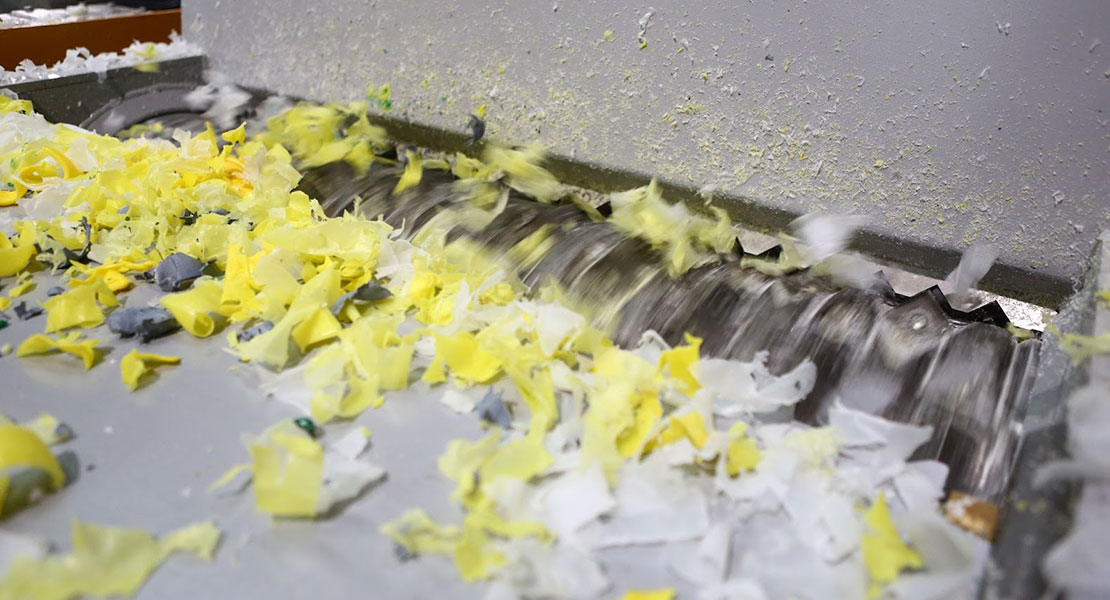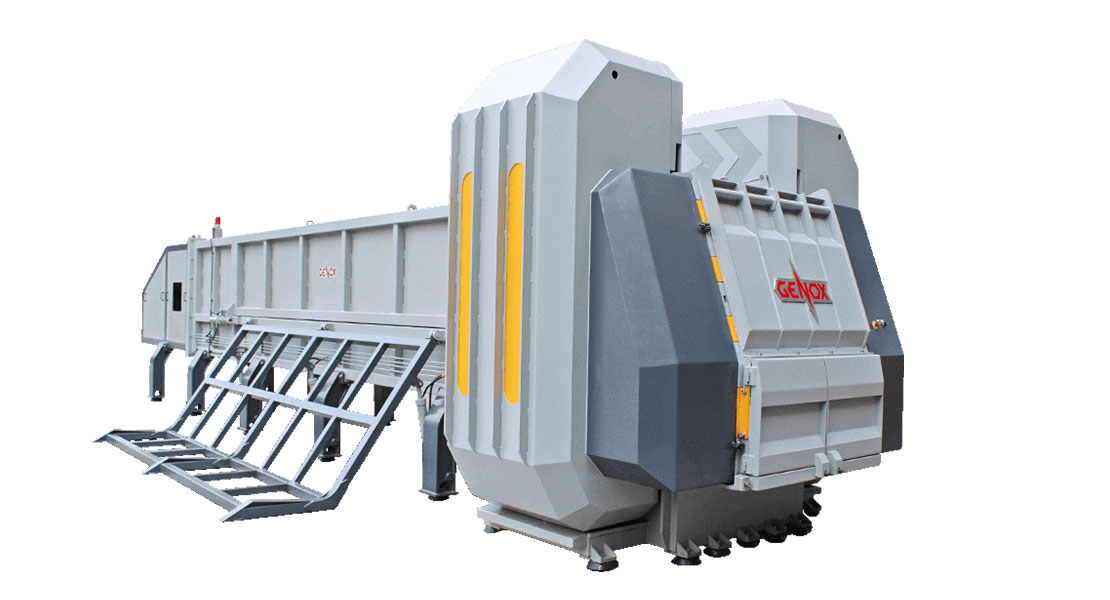Plastic pipes including large pipes, long pipe or tubes, Horizontal pipes, HDPE pipes are very useful in a lot of construction work. They serve a variety of purposes such as drainage construction, construction of pipe-borne water, power, oil, etc. For this, there is an increasing demand for these large pipes and consequently, a lot of waste has resulted from their use over time. This article discusses the ways to shred and recycle these large pipes and the necessary machines or equipment for achieving this.
-m-1110-01.jpg)
The demand for plastic pipes, shapes, profiles, and sheets has been growing steadily in recent years, driven by several factors including urbanization, the growing demand for clean water and sanitation, and the increasing use of plastic pipes in the oil and gas industry. The Latin American market (especially Mexico, Brazil, Argentina, and Chile) has also seen significant growth in demand for plastic pipes due to the region's rapidly growing population and urbanization, as well as the growth of the oil and gas industry. Overall, the global demand for plastic pipes is expected to continue growing in the coming years.
A survey conducted in 2019 showed that the global pipes market demand hit 42750 metric ktons according to Borealis. The growing rate of urbanization and the increasing demand for larger and cost-effective sewage lines are some of the factors that affected the production from 2014-2019.
Also, according to Borealis, it's been forecasted that the market demand will have reached over 57000 metric ktons in volume by 2024 . That is about a 33.3% increase in 4 years. This growth is due to the increasing high demand of large PVC pipes by the agricultural, chemical, construction and petrochemical industries. The PVC pipe market is expected to be valued at $12.1 billion with a CAGR growth rate of 5.5% from 2022-2031 (source)
However, as the use of plastic pipes continues to increase, the amount of waste plastic that is sent to landfills also increases, leading to environmental problems. To address these problems, it is important to make good use of waste plastic pipes, shred and recycle them. This process involves using specialized equipment to shred the plastic pipes down into small pieces, which can then be processed and used to create new products. Shredding and recycling plastic pipes offers several benefits, both for the environment and for the economy.
The Alliance to End Plastic Waste, formed in 2019 in the US, has committed $1 billion with the goal of investing $1.5 billion in the next five years to help end plastic waste in the environment. The Alliance comprises 30 companies of which 12 are Plastics Pipe Institute (PPI) members. PPI believes that this initiative will supply recycled plastic to use in pipes. A PPI member reports they've been using about 400 million pounds/year of recycled material to make pipes. This has set a new standard for the collection of plastics for recycling by other industries.
In addition, according to Recycling Today, changes to American Association of State Highway and Transportation Officials (AASHTO) and American Society for Testing and Materials (ASTM) standards have opened up a significant opportunity for recyclers and processors of high-density polyethylene (HDPE) in the production of corrugated pipes for public storm drains and culverts. Until 2018, pipes for public storm drains and culverts were made using only virgin resin, but the changes to the standards now allow for the use of recycled resin. The Plastics Pipe Institute estimates that hundreds of millions of pounds of recycled HDPE are already being used annually, and the new standards are expected to increase these numbers substantially.
There’s currently more demand for recycled material in the pipe industry than the supply. Shredding and recycling waste large pipes offers a range of benefits, both for the environment and for the economy. Here are some key benefits from three different perspectives:
Shredding and recycling scraps or wastes of large pipes helps to reduce the amount of plastic that ends up in landfills and incinerators. This reduces the need for new plastic to be produced, which in turn reduces greenhouse gas emissions and conserves resources. Recycling also helps to reduce plastic pollution, which is a growing problem that can harm wildlife and ecosystems.
Recycling large pipes can be a cost-effective option for waste management. It uses less energy and resources than producing new plastic, so it can save money in the long run. Additionally, recycling creates jobs and can stimulate economic growth, as recycled materials can be used in new products and industries.
Recycling large pipes can also have social and community benefits. By reducing the amount of waste that is sent to landfills, recycling helps to improve public health and protect the environment. It can also promote community engagement and environmental awareness, as people can learn about the importance of recycling and how it can benefit society.

Plastic Pipe Shredder is a machine used to shred large to small plastic pipes into smaller pieces. This allows the plastic pipes to be recycled in a closed loop system, rather than being sent to a landfill. The recycling of large plastic pipe waste and old pipe made from different materials, such as HDPE, ABS, PVC, PP, and PE can be problematic and inefficient. Genox has versatile shredders and recycling systems equipped for a wide range of plastic pipe and tubes for all purposes. V series and J series are ideal pipe shredding and recycling models. Plastic polyethylene with different density grades and other thermoplastics like PP or PVC can be shredded by the above-mentioned models.
Large plastic pipes are among the most challenging applications for shredding because of their dimensions, density, and weight. Pipe waste with different diameters, wall thickness, and extents can usually be fed into the movable hopper of the Genox V series single-shaft shredder or J series four-shaft shredder by wide conveyor belt, crane, or forklift without much manual labor. The pipes are pressed against the rotating rotor by the hydraulic ram and shredded to a homogeneous flake size. Then the granulated flake is transported by the conveyor belt to the next step in the processing line.

Click here to read more about 3 Plastic Pipe Shredding and Recycling Machine Trends for 2023.
To keep updated about the latest news from the Genox, please follow us on our social media channels:
Genox YouTube: Recycling Solutions
Or you can also read more blogs about The Right Shredder for Highest ROI, 8 Basic Guides to Lithium-Ion Battery Recycling Machines and Systems.